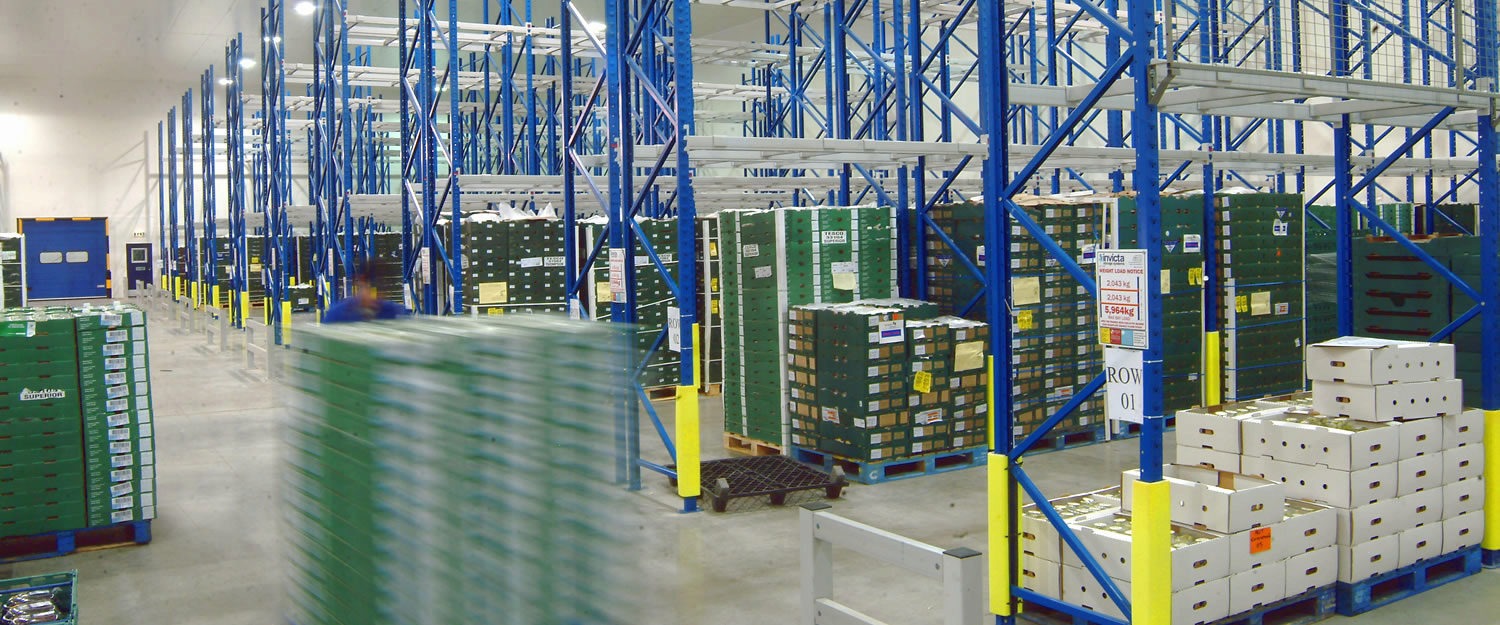For your information
You are being redirected to one of our divisional subsites which contains more detailed information on the required division. To navigate back to the main Invicta Group site, please click the link found in the footer at the bottom of the page.
How the Trump tariffs could impact warehousing and logistics
31st March 2025
Quick Quote
Contact Mick Coyne
To get a quotation or arrange a free site survey - Call Mick Coyne on
-
 UK
UK
Current location:
Quick Quote
Contact Mick Coyne
-
 UK
UK
Current location:
The Donald J. Trump White House is nothing if not eventful. Recent extraordinary events aside, the decision that has caused the biggest shockwaves for businesses in recent weeks is the announcement of heavy tariffs against international trading partners. Trump has opted to levy 25% tariffs on a range of goods imported from major nations, including Canada, Mexico, China, and the European Union.
Much like the first Trump presidency, these tariffs could have significant repercussions for global supply chains, impacting warehousing and logistics in profound and sometimes unpredictable ways. From the demand for increased warehouse space to shifts in trade partnerships, businesses need to start preparing for a rapidly changing logistics environment.
What are the Trump tariffs?
Much as he did in his first term, President Trump has gone on the offensive when it comes to international trade. Wanting to make the United States more self-sufficient and reduce its trade deficits, Trump has announced a range of harsh tariffs on the country’s biggest trading partners, including close neighbours Mexico and Canada, as well as the likes of China and the European Union. The new president has promised to impose a 25% tariff on all goods imported from these nations, and pledged an “additional” 10% tariff on Chinese goods.
The first time this happened, it took Trump leaving office to see a significant change in relations. Exemptions on things like aluminium and steel only kicked in under Biden, who ended up retaining other aspects of the tariffs. We’ve seen too how Trump himself has bolstered the argument for protectionism, and reducing America’s reliance on other nations. From fracking to semiconductors, the U.S. has announced its intention to improve manufacturing and resource extraction so that it is less dependent on allied countries, and less affected by conflicts that it seems increasingly averse to being involved in.
The result is a scenario which, while not quite on the same scale of complexity as Brexit, will doubtless cause disruption to global trade and supply chains. Harsh penalties on trading with the United States will hit revenues, changing the dynamic for smaller businesses in particular. While bigger companies may end up passing some cost burdens onto consumers, others could simply abandon the prospect of selling into the U.S., or indeed buying from it, as reciprocal tariffs seem highly likely, having happened during the first Trump presidency.
Tariffs and warehousing demand
One of the most immediate effects of increased tariffs is the potential for stockpiling. Businesses anticipating higher costs may seek to import goods in bulk before tariffs take effect, leading to a short-term surge in demand for warehousing space. We’ve already seen this to an extent, with companies such as AMD and Nvidia rushing to manufacture their devices, and building up stock ahead of their recent product launches.
Conversely, as tariffs disrupt global trade flows, companies may shift from just-in-time inventory models to stockpiling critical goods, both accommodating for shortages as a result of reduced production, and as a protection against rising prices. Businesses that rely on goods from heavily tariffed nations may also face slower logistics due to customs delays and increased costs, requiring greater buffer stock to maintain supply chain resilience.
With the UK and Canada currently in flux as Trump mulls over the extent of his tariffs—and whether to apply them at all, in the UK’s case—this could be a trend that continues to present itself through the first half of the year. The ongoing threat of tariff imposition or escalation could lead to further long-term warehousing expansion, as companies adjust to the new trade landscape—increasing the growth we’ve already seen from ecommerce.
Supply chain disruption
With tariffs looking as though they will make many imported goods significantly more expensive, companies may start to explore the possibility of rerouting supply chains through alternative trade partners. This is never a particularly easy transition, and may cause delays in logistics operations, as new suppliers, routes, and customs processes are gradually implemented.
These small tweaks to the supply chain have a tendency to snowball, with minor delays and inconveniences stacking up. The longer transit times and increased border inspections that may result could reduce hard-won efficiencies, pushing up costs and jeopardising the supply of time-sensitive goods.
Much as Trump wants to drive local production in the U.S., companies might also begin sourcing more goods from domestic manufacturers, with the increased costs of things like local labour being offset by the costs posed by tariffs. WHile this could actually reduce warehousing demand due to shorter travel distances, local suppliers may need to scale up production as a result, putting extra stress on local supply chains, and requiring new logistics infrastructure.
Exploiting the special relationship
While tariffs pose challenges for many nations, the UK could benefit significantly, and reap a first major reward of Brexit. Prime Minister Keir Starmer appears to have been fairly successful in his dealings with Trump so far, and the U.S. clearly sees the UK as a potential bulwark against the influence of the EU, and a good partner to have in the region.
Businesses seeking to bypass costly tariffs against the EU might start looking to relocate production or warehousing operations to the UK as a non-tariffed region, as companies use it as a staging ground for both European and global distribution. This could see the UK fulfil its traditional role as a staging post for American business operations in Europe in particular, an era that seemed unlikely to return after Brexit.
While this could lead to job growth and infrastructure investment, it’s also wise to strike a note of caution. While the capricious nature of President Trump means there are few guarantees about tariffs being withheld, any such shift in the UK’s trading relationships would also place added strain on the UK’s logistics, with ports and airports only just having come to terms with the added complexity of trading after Brexit. More trade occurring from the UK to the EU and beyond may overwhelm infrastructure that is still straining at the seams.
How to mitigate the effects of tariffs
It’s been a half decade of challenges for the global economy, and like those previous issues, the problems posed by tariffs can also be overcome. To do so, warehouses need to look at adopting strategies that further optimise their available space, improve efficiency, and streamline their broader logistics operations.
With demand for storage space rising, now is the time for warehouse operators to maximise their storage capacity, and explore higher density racking systems. High-density pallet racking, mezzanine levels, and multi-tier storage solutions can help businesses store more goods within the same physical footprint, avoiding the need for building expansion or relocation. Implementing automated storage and retrieval systems (AS/RS) and new robotics solutions can further aid this, reducing retrieval times, strain on employees, and labour costs.
As companies continue to stockpile goods as a means to hedge against tariffs, warehouses should also consider whether they can better adapt their layouts to accommodate more inventory. Things like flexible storage areas using modular racking, improved dock management, and dedicated cross-docking zones can make modest but cumulatively significant improvements to logistics efficiency. Investing in efficient, modern temperature-controlled storage areas can also provide businesses with options for storing perishable goods that might be impacted by tariffs on food imports.
Warehouse operators should also consider refining their logistics processes to mitigate any delays caused by tariffs. Leveraging more modern warehouse management systems (WMS) with predictive analytics can help businesses anticipate fluctuations in demand, and adjust their inventories accordingly. Partnering with third-party logistics providers (3PLs) can also provide an added layer of security, offering flexible storage and distribution solutions in times of trade uncertainty.
Finally, companies which are particularly reliant on tariffed imports should consider diversifying their supplier and distribution networks, and reducing their exposure to trade disruptions. Sourcing goods from multiple regions may not be straightforward, but it is an effective way to mitigate the risk of supply chain bottlenecks. Warehouses can support this strategy by offering multi-client storage solutions, allowing businesses to store diverse product lines from different suppliers within a single facility.
The introduction of new Trump tariffs is another wildcard in a deck full of jokers, and could have widespread implications for global supply chains. Some knock-on for warehouses is inevitable, and it seems likely to drive even greater demand for new warehouse space, and more efficient logistics operations.
While businesses may face challenges due to slower logistics and increased costs, there are always ways to reduce the risk, and harden your business’ resilience. Strategic adjustments in warehouse design, racking, and logistics processes will inevitably help to offset the damage—and the UK could find itself in a surprising position to come out on top.











Share/Like this page